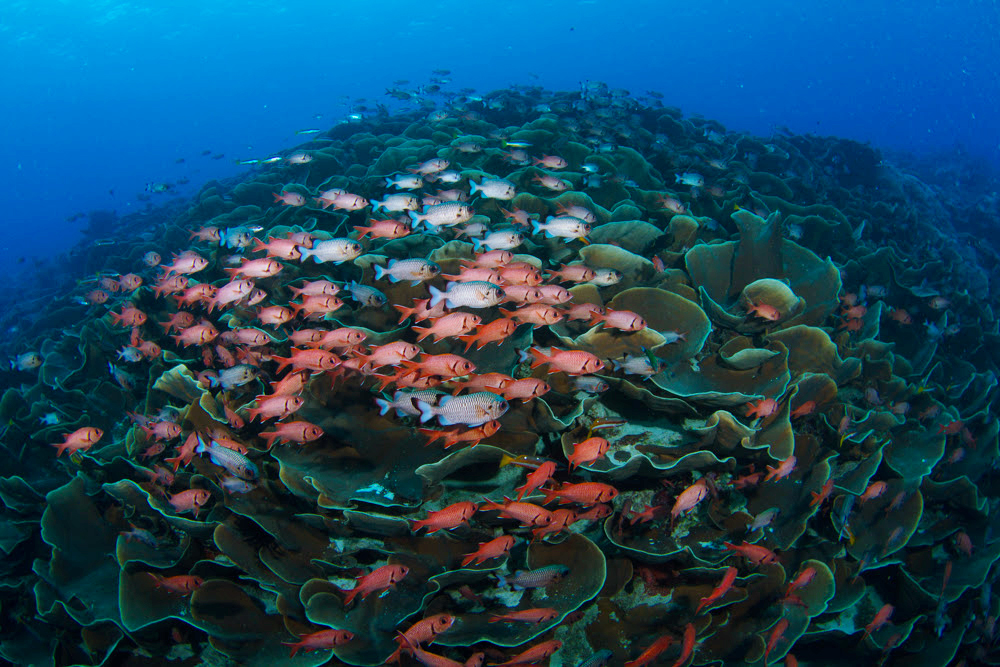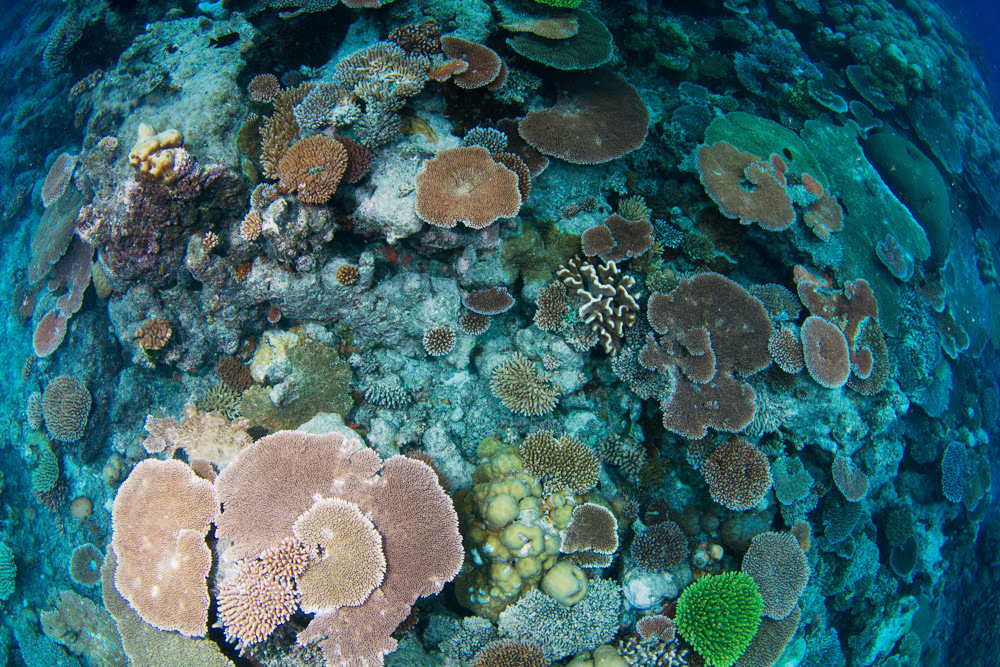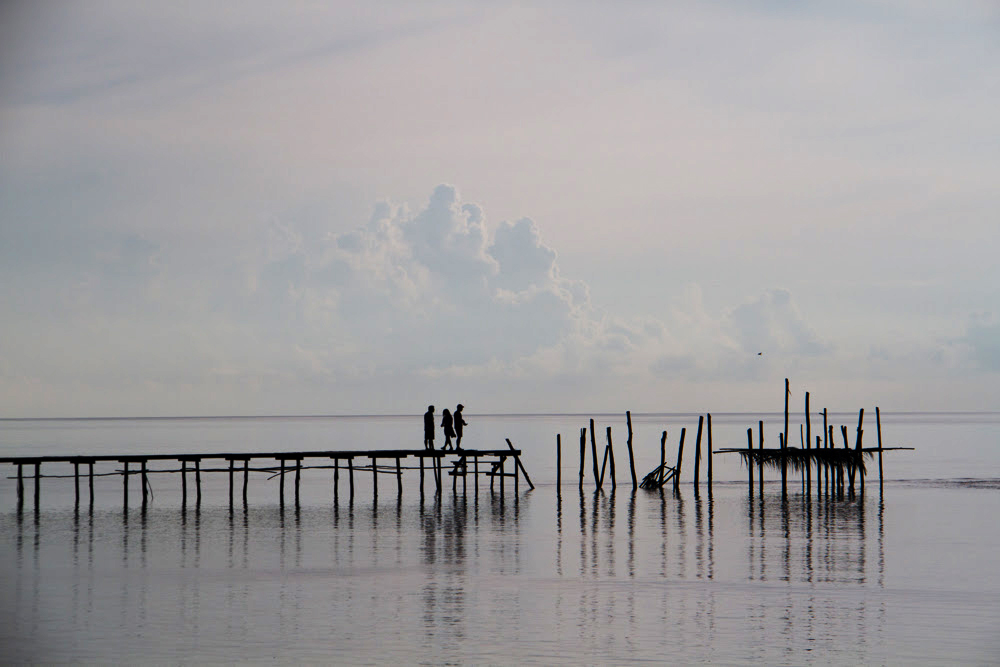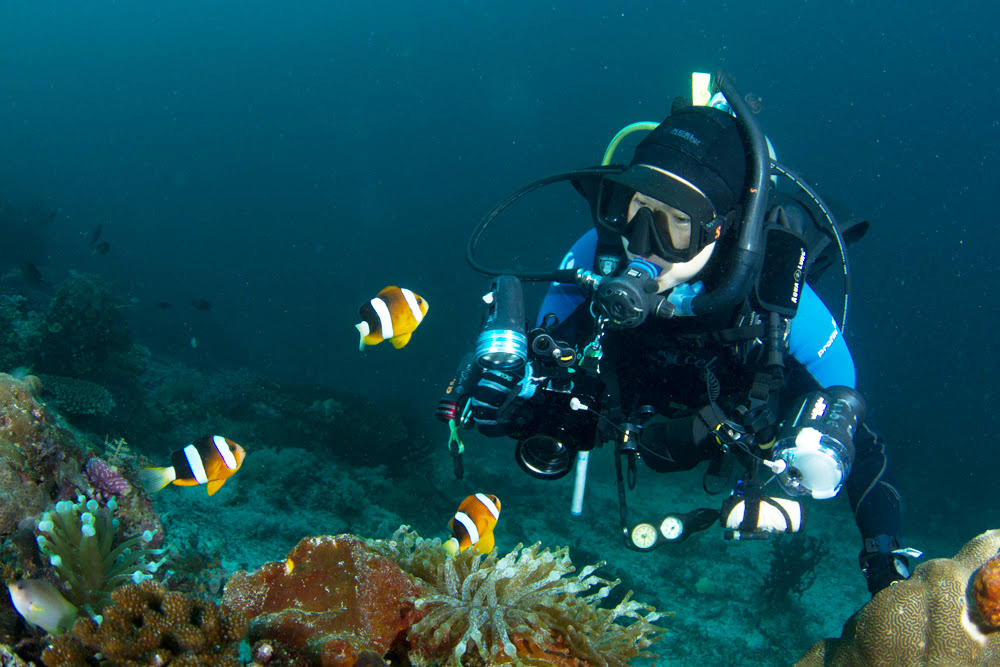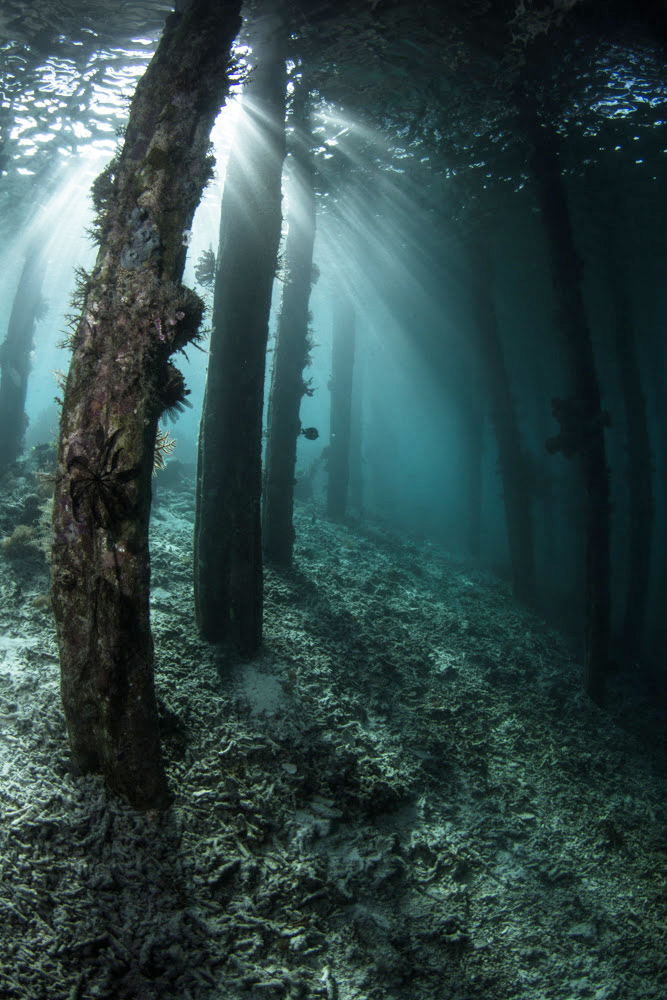Field of Cabbage... Coral
Colonies of cabbage coral (Turbinaria reniformis) sometimes forms tiers which offer good hiding place for school of fish like these soldierfish. The red fish are big-scale soldierfish (Myripristis berndti) and the whitish fish are shadowfin soldierfish (Myripristis adusta). A large field of cabbage coral colonies like this image taken in the South Pacific is rarely seen anywhere else in the world.


